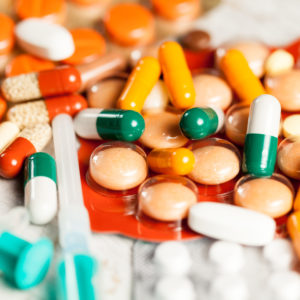The season of spring cleaning is officially upon us, which means that millions of Americans will reorganize their closets and trim their backyards in the coming weeks. If you’re one of them, don’t forget your medicine cabinet.
This Saturday marks Prescription Drug Take Back Day, an annual reminder to dispose safely the unused prescription drugs that can pose a grave threat to yourself and others.
That threat is more real now than ever before. Every year, there are more than four billion prescriptions dispensed in the United States. An estimated 40 percent of sold medications end up unused. Americans live busy lives, so it’s not uncommon for medications to be left on counters, dressers and night stands, in bags and purses, and even on the ground.
If they’re left in plain sight, unused medications can be particularly harmful to children. Every year, 60,000 children aged five and under are treated for accidental medicine poisoning. In any given day, four busloads of children visit the emergency room to be treated for medicine poisoning — one child every eight minutes. In nearly 90 percent of ER visits, the child had easy access to unused medication.
Public education is the key to safe medication disposal. Unfortunately, there remains a gap in public awareness, especially among older generations. In one-third of medicine poisoning cases, the medication belonged to a grandparent. While electrical outlets remain the top safety concern among grandparents, it’s actually 36 times more likely that a child will go to the ER for medicine poisoning than electrocution.
The problem is compounded by the intentional misuse of medications by teenagers and others who can easily access unused medicine. In any given year, roughly 15 million people aged 12 and over use prescription drugs non-medically. Prescription drugs are misused and abused more often than any other drug, with the exception of alcohol and marijuana.
Many Americans, including older adults, recognize neither the extent of the medicine poisoning epidemic — whether caused by intentional drug use or not — nor the proper ways to safely dispose of unused medication. First and foremost, make sure that you’re not receiving more medication than is required for treatment. Again, an estimated 40 percent of prescribed medicine is left unused, so you simply may not need all of it.
Then, check the label. Assuming the instructions recommend it, certain medications should be flushed down the toilet because they can be harmful in one dose. For example, even used adhesive pain patches can contain enough medicine to cause breathing problems and other health issues. But never flush medicine down the toilet unless the directions specifically instruct you to do so. Inhalers and needles, for instance, may have their own disposal instructions.
If there are no specific instructions, you can also consider disposing of unused medicine at local take-back programs through the Drug Enforcement Agency or your local community — local pharmacies and law enforcement agencies often participate in such programs.
And if there are no take-back programs near you? The simplest way to get rid of unused medicine remains trash disposal, but you should follow three steps beforehand. First, remove the medication from its original container and mix it with an undesirable substance, such as kitty litter or coffee grounds. Second, seal the mixture in a bag, can, or other container that prevents leakage. Then you can throw it in the trash. Also remember to protect your privacy by destroying the personal information on your prescription label or making it unreadable.
On this Drug Take Back Day, let’s recognize the problem in front of us and take steps to address it together. Safe disposal can save a life — whether it’s your child’s or your neighbor’s next door.

